Spotted Boxfish, Ostracion meleagris

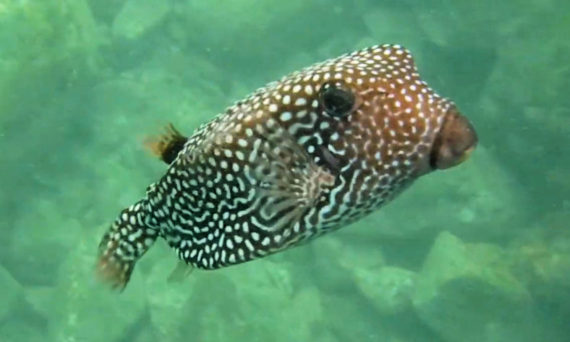 Spotted Boxfish, Ostracion meleagris, Juveniles. Underwater photographs taken in Zihuantanejo Bay, Guerrero, March 2018. Photographs courtesy of Ron Woheau, Zihuantanejo.
Spotted Boxfish, Ostracion meleagris, Juveniles. Underwater photographs taken in Zihuantanejo Bay, Guerrero, March 2018. Photographs courtesy of Ron Woheau, Zihuantanejo.
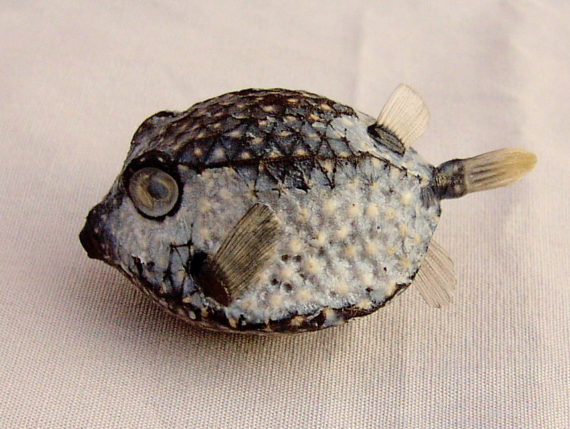
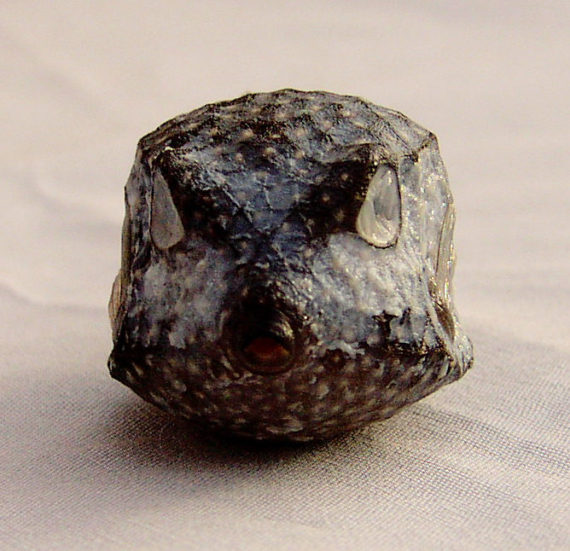 Spotted Boxfish, Ostracion meleagris, Juvenile, Female. Fish collected off the beach at Km 21, Cabo Real, Baja California Sur, January 2007. Length: 2.5 cm (1.0 inch). Fish identification courtesy of H.J. Walker, Jr. Scripps Institute of Oceanography, La Jolla, California.
Spotted Boxfish, Ostracion meleagris, Juvenile, Female. Fish collected off the beach at Km 21, Cabo Real, Baja California Sur, January 2007. Length: 2.5 cm (1.0 inch). Fish identification courtesy of H.J. Walker, Jr. Scripps Institute of Oceanography, La Jolla, California.
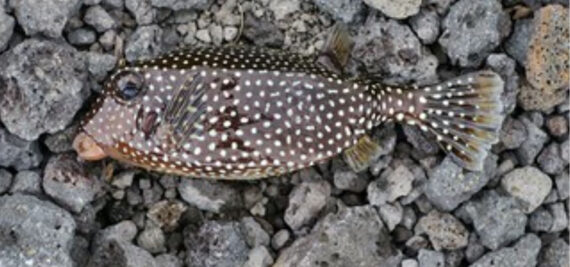 Spotted Boxfish, Ostracion meleagris, Female. Fish caught from coastal waters off Cabo San Lucas, Baja California Sur, January 2017. Length: 20 cm (7.9 inches). Catch, photograph and identification courtesy of Eli (obsessiveangling.wordpress.com).
Spotted Boxfish, Ostracion meleagris, Female. Fish caught from coastal waters off Cabo San Lucas, Baja California Sur, January 2017. Length: 20 cm (7.9 inches). Catch, photograph and identification courtesy of Eli (obsessiveangling.wordpress.com).
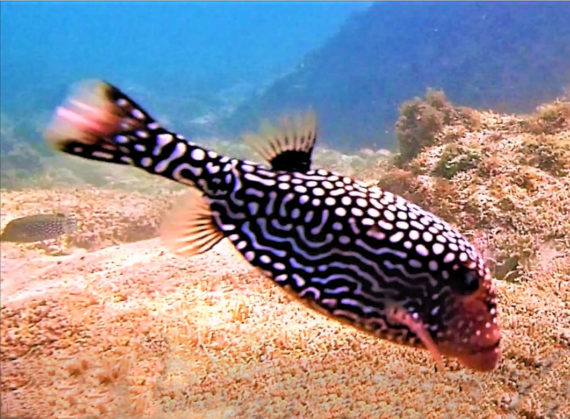 Spotted Boxfish, Ostracion meleagris, Female. Underwater photograph taken in Zihuantanejo Bay, Guerrero, March 2018. Photograph courtesy of Ron Woheau, Zihuantanejo. A most unusual markings. Identification reconfirmed by H.J. Walker, Jr., Scripps Institution of Oceanography, La Jolla, California.
Spotted Boxfish, Ostracion meleagris, Female. Underwater photograph taken in Zihuantanejo Bay, Guerrero, March 2018. Photograph courtesy of Ron Woheau, Zihuantanejo. A most unusual markings. Identification reconfirmed by H.J. Walker, Jr., Scripps Institution of Oceanography, La Jolla, California.
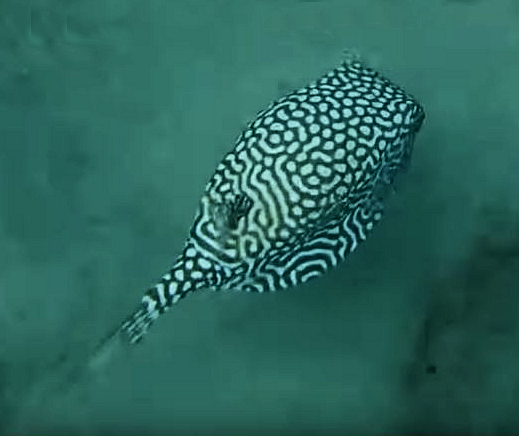
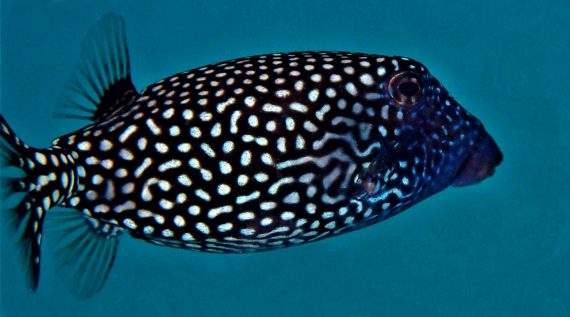
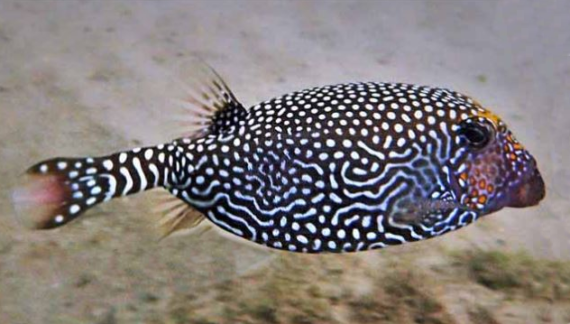 Spotted Boxfish, Ostracion meleagris, Female. Underwater photographs taken in Zihuantanejo Bay, Guerrero, March 2018 and February 2023. Photographs courtesy of Ron Woheau, Zihuantanejo.
Spotted Boxfish, Ostracion meleagris, Female. Underwater photographs taken in Zihuantanejo Bay, Guerrero, March 2018 and February 2023. Photographs courtesy of Ron Woheau, Zihuantanejo.
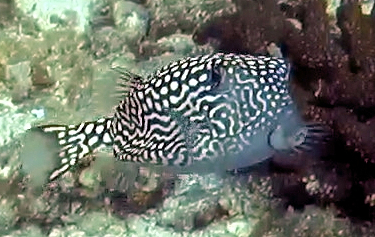 Spotted Boxfish, Ostracion meleagris, Female. Underwater photograph taken in Zihuantanejo Bay, Guerrero, January 2019. Photograph courtesy of Maude Jette, Dive Zhuatanejo (www.Divezihuatanejo.com).
Spotted Boxfish, Ostracion meleagris, Female. Underwater photograph taken in Zihuantanejo Bay, Guerrero, January 2019. Photograph courtesy of Maude Jette, Dive Zhuatanejo (www.Divezihuatanejo.com).

 Spotted Boxfish, Ostracion meleagris, Males. Underwater photographs taken in Zihuantanejo Bay, Guerrero, March 2018. Photographs courtesy of Ron Woheau, Zihuantanejo. Most unusual markings. Identification reconfirmed by H.J. Walker, Jr., Scripps Institution of Oceanography, La Jolla, California.
Spotted Boxfish, Ostracion meleagris, Males. Underwater photographs taken in Zihuantanejo Bay, Guerrero, March 2018. Photographs courtesy of Ron Woheau, Zihuantanejo. Most unusual markings. Identification reconfirmed by H.J. Walker, Jr., Scripps Institution of Oceanography, La Jolla, California.


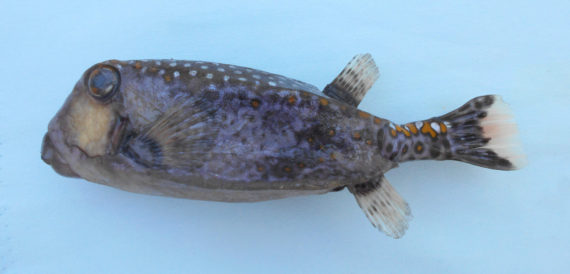

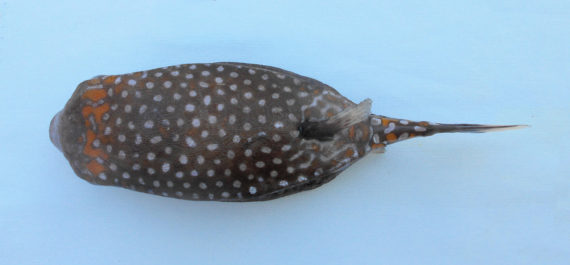 Spotted Boxfish, Ostracion meleagris, Male. Fish caught off the beach at Cabo Real, Baja California Sur, August 2019. Length: 14 cm (5.5 inches).
Spotted Boxfish, Ostracion meleagris, Male. Fish caught off the beach at Cabo Real, Baja California Sur, August 2019. Length: 14 cm (5.5 inches).
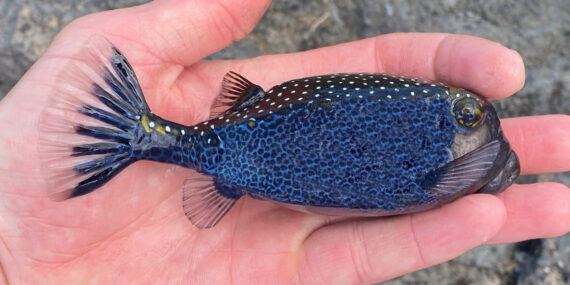 Spotted Boxfish, Ostracion meleagris, Male. Fish caught from coastal waters off Kona, Hawaii, March 2021. Length: 14 cm (5.5 inches). Catch, photograph and identification courtesy of Luke Ovgard, Klamath Falls, Oregon.
Spotted Boxfish, Ostracion meleagris, Male. Fish caught from coastal waters off Kona, Hawaii, March 2021. Length: 14 cm (5.5 inches). Catch, photograph and identification courtesy of Luke Ovgard, Klamath Falls, Oregon.
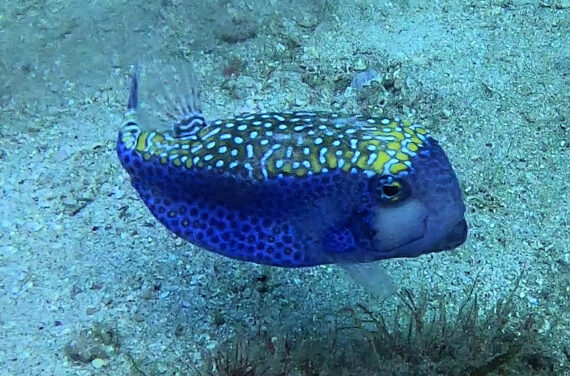
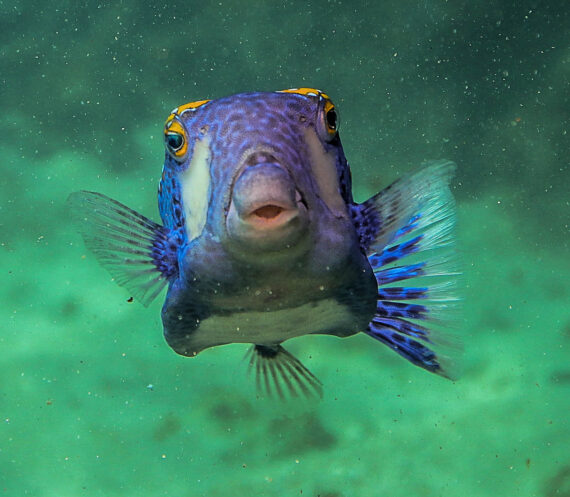 Spotted Boxfish, Ostracion meleagris, Male. Underwater photographs taken in coastal waters off Puerto Vallarta, Jalisco, September 2021. Photographs courtesy of Kevin Erwin, Seattle, Washington.
Spotted Boxfish, Ostracion meleagris, Male. Underwater photographs taken in coastal waters off Puerto Vallarta, Jalisco, September 2021. Photographs courtesy of Kevin Erwin, Seattle, Washington.
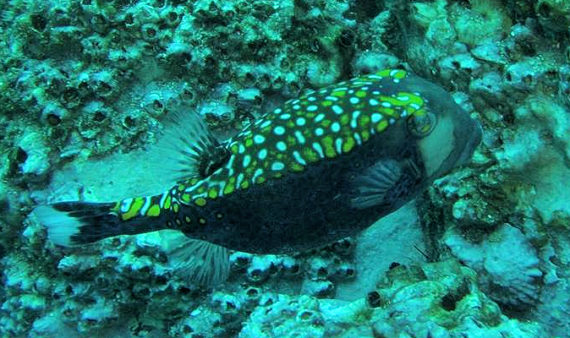 Spotted Boxfish, Ostracion meleagris, Male. Underwater photograph taken in Zihuantanejo Bay, Guerrero, Guerrero, March 2018. Photograph courtesy of Maude Jette, Dive Zhuatanejo (www.Divezihuatanejo.com).
Spotted Boxfish, Ostracion meleagris, Male. Underwater photograph taken in Zihuantanejo Bay, Guerrero, Guerrero, March 2018. Photograph courtesy of Maude Jette, Dive Zhuatanejo (www.Divezihuatanejo.com).
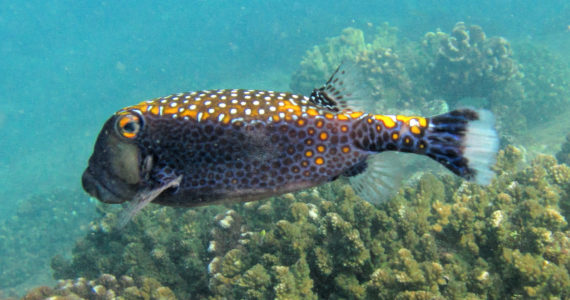 Spotted Boxfish, Ostracion meleagris, Male. Underwater photograph taken in the greater Los Cabos area, Baja California Sur, October 2019. Photograph courtesy of Bob Hillis, Ivins, Utah.
Spotted Boxfish, Ostracion meleagris, Male. Underwater photograph taken in the greater Los Cabos area, Baja California Sur, October 2019. Photograph courtesy of Bob Hillis, Ivins, Utah.
The Spotted Boxfish, Ostracion meleagris, is a member of the Boxfish or Ostraciidae Family, and is known in Mexico as cofre moteado. Globally, there are ten species in the genus Ostracion, of which one, this species, is found in Mexican waters of the Pacific Ocean.
The Spotted Boxfish has an oblong thick body that are enclosed in a bony box formed by thickened, joined, enlarged, and hexagonal scale plates. Juveniles and females are dark brown to black with small white spots. Males are dark brown with small yellow-white spots dorsally, dark-edged orange-yellow spots on their sides, and blue spots on the rest of their body. Their box has openings for the mouth, eyes, gill slits, fins, and tail base. Their backs are slightly rounded. They have a pair of longitudinal ridges on their lower flanks, a flat bottom, and no spines. Their small mouth opens at the front with fleshy lips and has 15 mid-sized teeth on each jaw. Their gill openings are short and form oblique slits in front of their pectoral base. Their anal and dorsal fins are at the rear; their caudal fin is rounded; their dorsal fin has no spines; and, they do not have pelvic fins.
The Spotted Boxfish is a slow swimmer that is found around coral and rocky reefs at depths up to 72 m (235 feet). They reach a maximum of 25 cm (9.8 inches) in length. They reside in harems of 1 male and 3 or 4 females. They feed on algae, soft corals, crustaceans, sponges, truncates, and worms. The Spotted Boxfish is poorly studied with very limited information available about their lifestyle and behavioral patterns including specific details on age, growth, longevity, movement patterns, diet, habitat use, and reproduction.
The Spotted Boxfish has a broad global distribution, however, in Mexican waters they are a resident of the Pacific Ocean but have a limited distribution being found only between La Paz and Cabo San Lucas, Baja California Sur on the east coast of Baja, and from Mazatlán, Sinaloa, southward along the coast of the mainland to Guatemala.
The Spotted Boxfish is unique in appearance and cannot be easily confused with other species, however, it is somewhat similar to the Spiny Boxfish, Lactoria diaphana (larger tapered body without small white spots).
From a conservation perspective the Spotted Boxfish has not been formally evaluated. The are small in stature and of limited interest to most. They have been used on a limited basis as a nice table decor when allowed to dry. They are protected by a toxic slime that can kill other fish, thus making them unsuitable for use in aquariums.